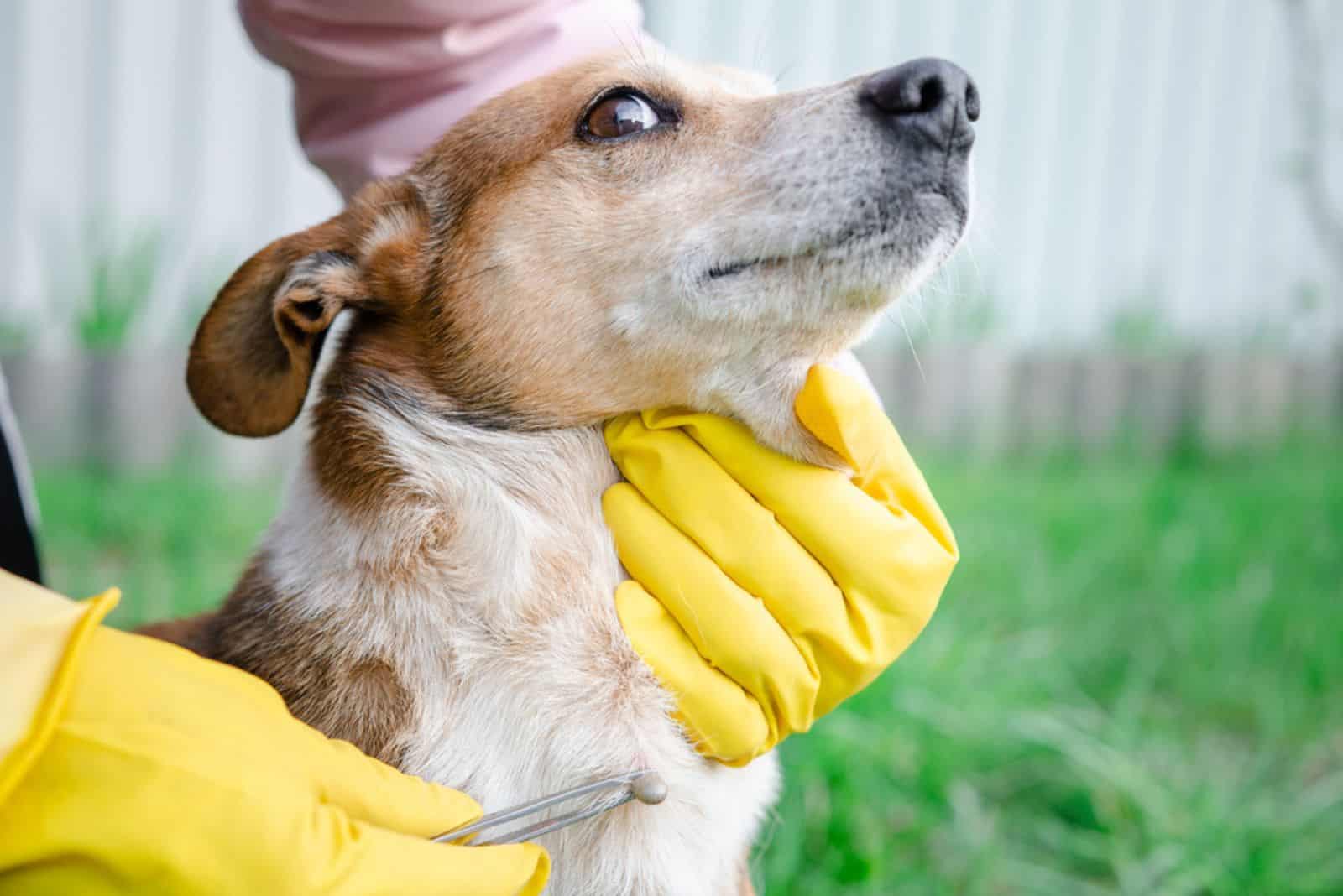Getting rid of mites might be one of the most irritating things. It takes time and patience. And we want to make sure our doggies are alright right now, if possible!
It’s not a pleasant situation for our furry companions, either. Dogs keep on scratching, their skin becomes red or flaky, and they can even get a secondary infection. Of course, there are more symptoms of mite infestation than itchy and red skin, but they are some of the most common symptoms that are telling us — doggo has mites!
So, how to get rid of mites on dogs?
There is a solution, in fact, there are 11 possible solutions to how to treat dog mite infestations. From the most common and vet-prescribed solutions to homemade solutions, they are all here on our list.
They will take time, but don’t worry — mites are treatable and if treated correctly and on time, other infections that might follow mites can be avoided, too.
Let’s smite the mite!
How Do I Get Rid Of Dog Mites?
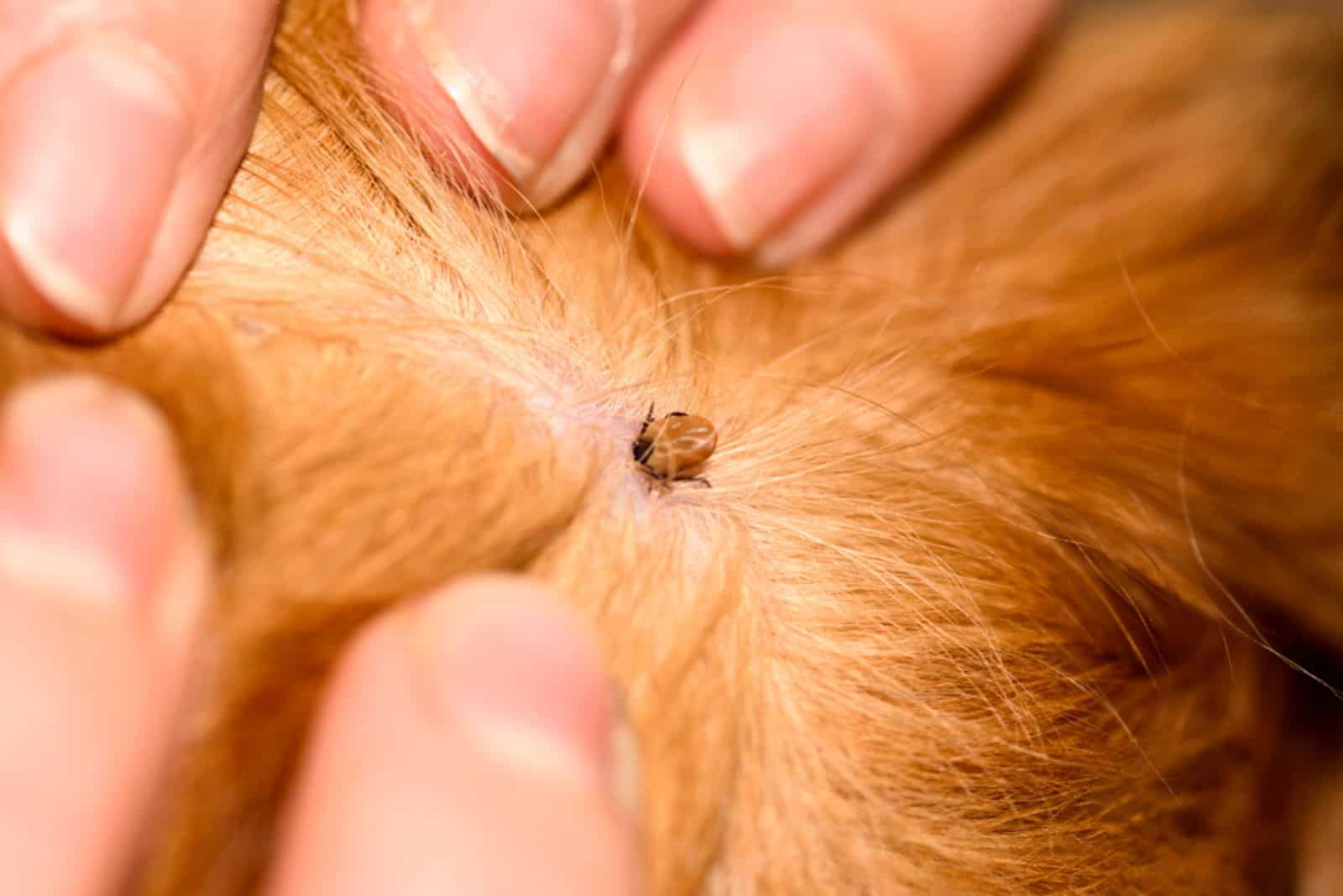
If you have noticed your dog has started to scratch or rub its face on the ground or with its paws, check the skin for mites.
These tiny creatures cause discomfort and itchiness in dogs, causing the dogs to start biting and rubbing their whole body or head on hard surfaces to relieve the itchiness and discomfort. And, to make matters worse — most mite infestations are highly contagious. Some of them can be transferred onto people, too.
So, it is absolutely necessary to treat the dog and get rid of these little pesky creatures. How to get rid of mites on dogs? The first step is to take your dog to the vet just in case there is another underlying problem causing the sudden mite infestation.
The vet can examine the dog and make sure the overall health of the dog is not an issue. After you have consulted the vet, you can check out these 11 solutions. The vet will probably give you a prescription for shampoo or spot-on drops to treat the mites.
Either way, we have them all on our list.
Here are the solutions…
1. Anti-Parasitic Shampoo
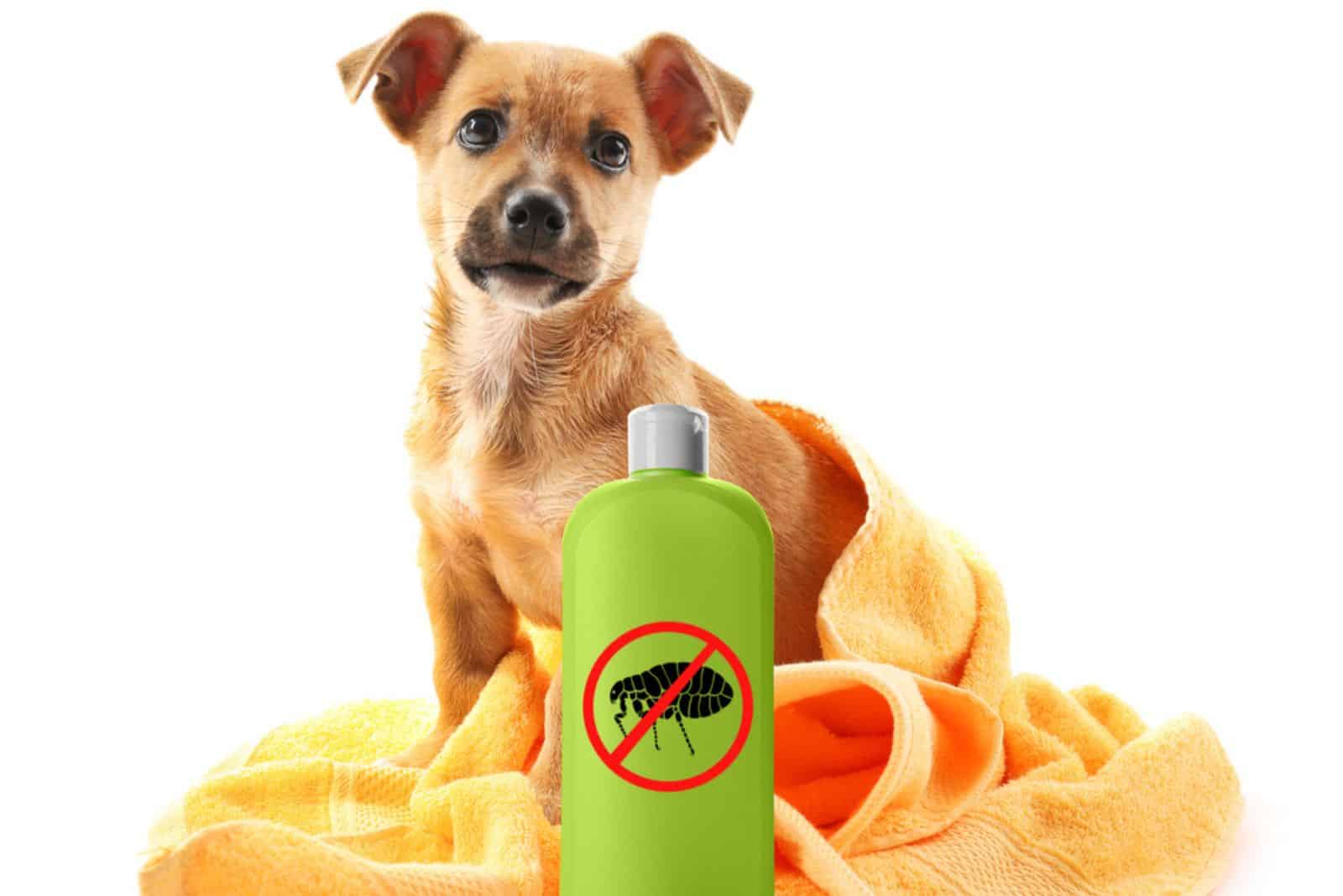
This is the solution that will most likely be the first on your mind. And you are right. Most mite infestations can be successfully treated using anti-parasitic shampoos. They are also one of the first choices when it comes to treating all kinds of other skin infections.
You can buy this type of shampoo from a pet store, or you can order them online. The best option would be to ask your vet what type of anti-parasitic shampoo to get for your dog. Your vet should be able to recommend brands that have proven results when it comes to mites.
Just remember, even though some mite infestation symptoms might look like dandruff, that does not mean we can wash our dog using head and shoulders shampoo.
It is always best to ask your vet for advice. They will prescribe or recommend a good anti-parasitic shampoo that will deal with the mite problem effectively. The name anti-parasitic comes from the fact that these shampoos have special ingredients to kill the mites.
The shampoo will kill the mite — an adult form. But they cannot kill the eggs. That’s why it is important to wash your dog for the next four weeks at least. If you want to be 100% sure, you can continue using the anti-parasitic shampoo for another two weeks.
In other words, you have to wash your dog with anti-parasitic shampoo for 4 weeks. Anything less than that will result in re-infestation. The best option is to use the shampoo for 4 to 6 weeks.
How To Use The Shampoo?
First of all, I hope your doggo loves taking baths. Fingers crossed.
Now, the first thing is to make sure your dog’s fur and skin are wet. Use lukewarm water — that means it is not too cold and it is not too hot, either. You can try the water temperature by trying it out on the inside of your forearm. If it feels alright, it’s OK to use on a dog too.
If you checked the water, here are the steps:
- Wet coat
- Apply shampoo (feel free to apply more)
- Massage the shampoo into the dog’s fur
- Make sure to reach the skin if your dog has a thick or double coat type
- Leave it on for about 15 minutes
- Rinse thoroughly
Depending on the type of mites that infected your dog, you can use gloves to avoid transferring them on yourself.
2. Spot-On
This is another solution to how to get rid of mites on dogs commonly recommended by vets. The spot-on medications are used against other external parasites, like fleas and ticks, as well. They can also be used against internal parasites.
Spot-on medications usually contain icaridin (picaridin), geraniol, fipronil, and other active ingredients against parasites. Icaridin is actually a synthetic chemical substance similar to a substance common in plants like black pepper.
Others are plain insecticides that are used in agriculture as well. They are all regulated by the Center for Veterinary Medicine (CVM), a part of the FDA. The most common type of spot-on medication is Advantage Multi.
Their main goal is to kill the mites and other external and internal parasites. You should consult your vet about what kind of Spot-on medication to use for your dog. Remember not to use spot-on medication on dogs younger than four months of age.
How To Use Spot-on?
Spot-on is a topical medication and it comes in a pipette ready to be used. You should open the pipette by cutting the tip with scissors.
And then:
- Calm the dog
- Part the fur at the base of the skull/neck
- Empty the whole content of the pipette directly on the skin
- Tell your dog he’s a good boy
Be careful not to apply spot-on medication on the fur. If that happens the medication will not be effective. You will need to repeat the procedure. Also, do not touch the medication, and don’t let your dog touch it.
It is hard for a dog to reach the back of its neck, but just in case pay attention to your dog’s behavior for half an hour. This is also important for a possible allergic reaction.
Some dogs might be allergic to certain spot-on medication ingredients. If you notice any uncommon behavior or you can see your dog is in pain — rinse the spot-on and contact the vet.
3. Medicine

When you suspect your dog might have mites and you take your dog to a local vet clinic, the vet might recommend drugs.
Some of the most common medications prescribed by a vet are:
- Ivermectin
- Nexgard
- Bravecto
It doesn’t have to be one of these medicines. Your vet will give you the best options according to the drug’s availability and effectiveness. But it is important not to apply any of the drugs for internal and external parasites without a green light from your vet.
Nexgard and Nexgard Chews are available over the counter, and you can use them as prevention once a month, too.
Ivermectin is a prescription-only medicine. It is used for the prevention of heartworm. Even though it’s on prescription, it is very common, and you can find it in any veterinary pharmacy.
How To Give Medicines To A Dog?
When it comes to Nexgard, they are already beef-flavored and ready for your dog to chew and eat them. But, if you think your dog won’t chew it on its own, you can hide the medicine in your dog’s favorite food.
The same applies to Bravecto. It’s a chew that can be given to a dog as a treat or combined with food. Just make sure your dog eats the entire chew.
If you are using Ivermectin you can give it as a chew, tablet, or orally via syringe. Of course, if you are giving Ivermectin via syringe you must remove the needle. This type of oral administration of the medicine is common for Ivomec (the brand name for Ivermectin).
You can apply the liquid directly into the dog’s mouth or you can inject it into a piece of bread and give it to your dog as such.
Remember to consult your vet before applying any type of medicine to your dog! If you notice your dog is behaving unusually, his head is hot to the touch, he is avoiding food, or vomiting, take your dog to a vet.
4. Mineral Oil
If your doggo is having trouble with mites in its ear canals, mineral oil is one of the oldest and most effective solutions for how to get rid of mites on dogs.
We will talk about types of mites in detail later, but for now, let’s just say that there is a type that attacks dogs’ ears.
If you notice your dog shows symptoms of intense itching in and around its ears, it is time to take a look inside the ear canals. Before taking your dog to the vet, you can look for yourself.
If you notice some kind of black gunk or dirt-like formations in your dog’s ear, chances are your dog has a mite infection. Of course, you shouldn’t make the diagnosis on your own without a proper examination by the certified DVM.
The mineral oil treatment for ear mites has been proven an effective, but not a fast solution.
Mineral oils should literally drown and kill the mites in the ear canals of the dog. But, because the oil doesn’t have any effect on the mite’s eggs, the treatment should be repeated for at least 4 weeks.
The best option is to apply the mineral oil to the ear canal of your dog two times every week for four to six weeks.
How To Apply Mineral Oil?
First of all, make sure your dog’s ear is clean and dry. Never use q-tips when cleaning your doggo’s ear. You can accidentally hurt your dog by inserting the q-tip too far. You can use a cotton ball instead. Also, you will need a pipette which you can find in your local drugstore.
Here are the steps:
- Clean the dog’s ear with a cotton ball
- Use the pipette to apply two to three drops into the ear
- Massage the ear gently and slowly for a couple of minutes
- Use a cotton ball to apply the mineral oil to the outer parts of the ears
- After a couple of minutes, remove the dirt and mites with a cotton ball
Remember to do this for both ears. It doesn’t matter if you can see signs of ear mites or not.
5. Coconut Oil

This is another solution if you were wondering how to get rid of mites on dogs, especially ear mites. Coconut oil has many health benefits. One of them is getting rid of mites that cause ear infections.
You can use coconut oil for other ear infections in dogs, too. If they suffer from yeast or bacterial infections, coconut oil can be a solution.
These are the steps for applying coconut oil:
- You need to be sure the ear is dry and clean — use a cotton ball to clean the ears
- Apply a few drops via pipette
- Massage the ears gently
- Wait for a couple of minutes
- Clean the ears from mites and dirt
Pet owners should be aware that coconut oil cannot kill eggs. So, just like with the other home remedies we will talk about, you should continue applying coconut oil for 4 to 6 weeks.
6. Olive Oil
This home remedy is useful for both ear infections and skin infections. You can apply the olive oil directly into the ear canal or onto the skin.
It will act against the mites, larvae, and mite eggs! That means the treatment will be shorter than when you use other types of oil. But it still has to be at least 4 weeks long. This is because mites reproduce very fast, and you will want to kill them all before they lay new eggs.
If you think you’ve killed all the mites and their eggs, pay attention to your dog and its behavior. Even better, pay attention to your dog’s earwax color to see if there are any overlooked problems. This is the patience we talked about earlier. When it comes to treating skin health issues — it takes time to do it completely
How To Apply Olive Oil?
The procedure for applying olive oil to infected skin is quite simple:
- Use a clean cloth to apply the oil on the skin
- Leave the oil on the skin for up to 20 minutes
- Prevent your dog from licking the olive oil
- Wipe the oil with a cloth
- Repeat this two times every day until the infection is gone
If your dog has ear mites, you can apply olive oil to the ear canals in the same way as coconut or mineral oil. Just remember to apply the oil to both ears.
7. Essential Oils

If you want to use essential oils on your dog’s skin or ears, you have to be very careful. Never apply 100%, non-diluted essential oils on your dog. They can be very toxic.
Also, consult your vet before applying essential oils to a dog’s ear canal. But, if your vet gives you the green light, then this mixture might be the best way to get rid of mites on dogs.
You will need:
- 28g or 1oz of Witch Hazel
- 5 drops of either tea tree or melaleuca oil
- 5 drops of clove oil
How to apply:
- Mix all the ingredients
- Clean the ears with a cotton ball
- Use the pipette to apply up to 5 drops into the ear canal
- Massage the ear gently
- Use a cotton ball to remove mites and dirt
If you want this home remedy to be effective, you will need to apply the essential oils two times a day for ten days.
8. Green Tea Rinse
This is another wonderful solution if you were wondering how to get rid of mites on dogs and it is especially effective on ear mites.
Green tea can be applied on inflamed skin too because it has a soothing and anti-inflammatory effect. This is especially effective against chiggers or Trombiculosis — a skin disease caused by mites especially common during warmer weather.
All you need is some green tea. You should buy dried green tea leaves and not bagged green tea. This is because bagged green tea can have other ingredients inside, and we want only green tea.
What to do:
- Pour boiling water over the leaves
- Steep it for 5 minutes
- Strain the tea
- Let it cool until it’s lukewarm
Once you’ve made the tea you can use the same steps to apply it to the ear as for mineral oil. If it is the skin you want to apply it to, then follow the instructions for the olive oil.
Always use a clean cotton ball to clean the ears or a clean cloth to clean the skin.
You should apply green tea once a day for at least 4 weeks to make sure your dog is free of mites.
9. Apple Cider Vinegar

With its antibacterial and antiseptic traits, apple cider vinegar is a great solution for treating mites on dogs. Apple cider vinegar is safe to use on all dog sizes.
You will need:
- Half of a cup of apple cider vinegar
- Half of a cup of Borax
- Lukewarm water
What to do:
- Mix all ingredients
- Make sure the Borax is completely dissolved
- Make sure to use lukewarm water
- Apply the mixture to the entire dog’s body
- Avoid the eyes and mouth
- Massage the mixture onto the body
- Leave it to air dry
Be careful not to let your dog lick the fur until the fur is completely dry. Putting a cone on your dog is a good preventive method in this situation.
If you have a small dog, you can put the mixture into a bottle and spray it on the dog. This is also useful if you want to apply the mixture to only one part of the dog’s body.
Repeat the procedure once a week for four weeks up to one month. You can pay attention if your dog has crusty scabs around the mouth or anywhere else on the body, like on the dog’s back. If the scabs or crusts are not healing, take your dog to the vet.
10. Hydrogen Peroxide and Borax
These two ingredients mixed together make a good home remedy for getting rid of mites on dogs. If you were wondering how to get rid of mites on dogs using this mixture, the answer is — a sponge bath!
Hydrogen Peroxide has antiseptic and bacteriostatic activity, while Borax has disinfecting, antifungal, and anti-pest activity. So, combined they make a good choice in fighting mites on dogs.
What to use:
- 2 cups of 3% Hydrogen Peroxide
- 3 tablespoons of Borax
- Hot water
How to do it:
- Mix the ingredients
- Make sure the Borax is completely dissolved
- Make sure the water is warm, not hot
- Apply the mixture to the dog’s entire body
- Let it air dry — do not rinse
Just like with apple cider vinegar and Borax, do not let your dog lick its fur until it’s completely dry. This is because Borax can cause problems in dogs if ingested.
Use this mixture on your dog two times a week for four to six weeks. If you notice there is no change in your dog’s health condition, and you can still see your dog losing hair around the eyes and other parts of its body, take the dog to the veterinarian.
11. Honey

Honey also has antiparasitic properties, and on top of that — it is a great remedy to soothe inflamed skin.
Besides antiparasitic properties, antioxidant properties are also a great reason to apply honey to get rid of mites on dogs. You can apply honey directly onto the inflamed or sore skin.
Don’t forget that honey is very sticky, so pay attention to where your dog goes, sits, or lays while the honey is on the skin. You can keep the honey on the dog for up to 20 minutes, and then rinse it with lukewarm water.
Repeat the process at least two times a week for six weeks.
What Are Dog Mites?
Mites are arachnids. That means they are in the same class as ticks. They have eight legs, and they are all very small — less than 0.04 inches. But they can cause big problems!
Mites go through four stages of development or four stages of a life cycle. The last stage — the adult mite, is the one that causes problems. Other stages include egg, larva, and nymph.
There are many different types of mites. Most of them are not harmful to our dogs or us, but there are some that can cause problems.
We will, of course, mention those species of mites that infect dogs and can cause more or less serious health issues in our furry companions.
Types Of Mite Infestations
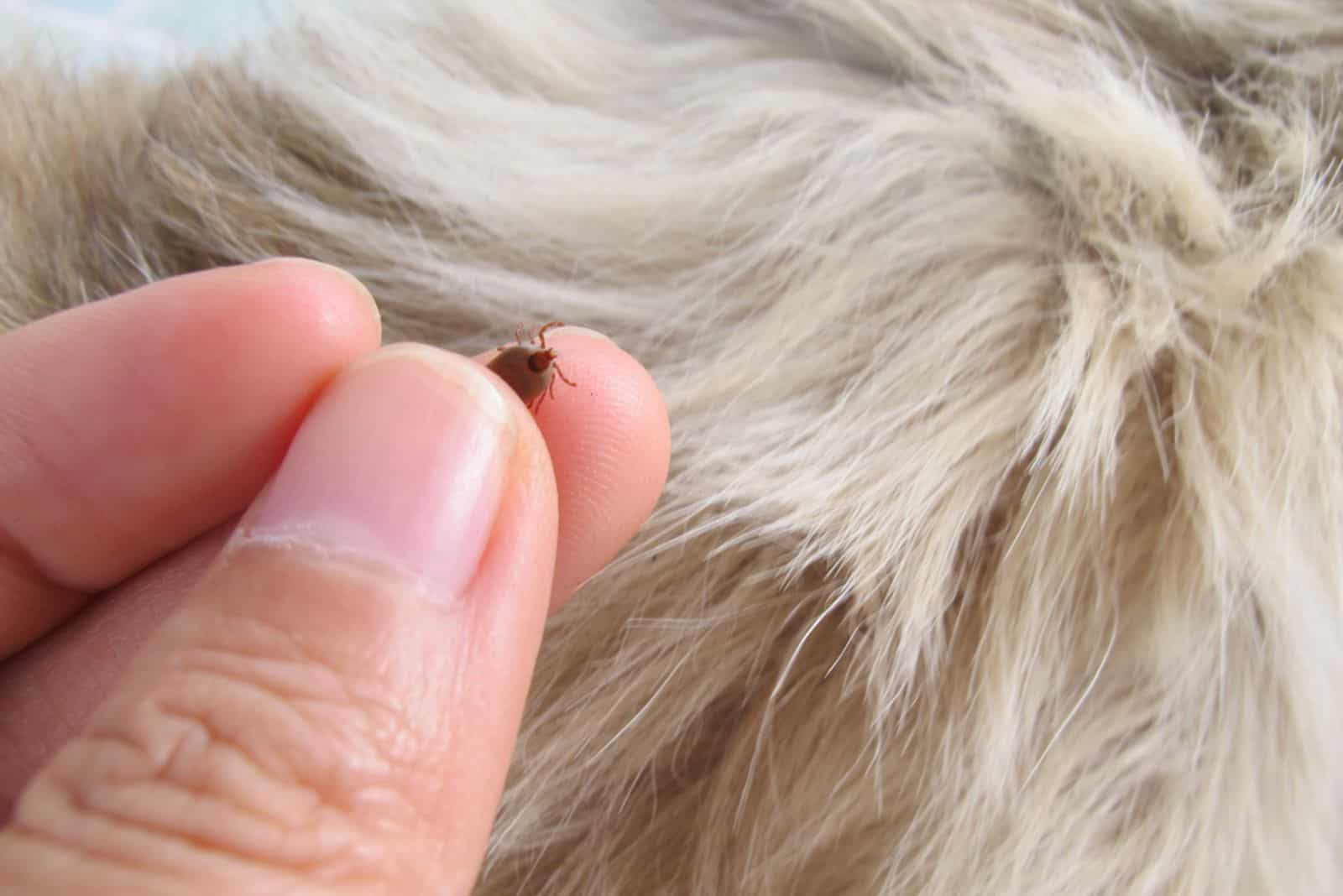
Any dog can get infected with mites. But most dogs that do have mite infestations are either older dogs or very young dogs. That means mites attack dogs that have compromised immune systems.
When the balance in the organism is broken, the mites take the opportunity and infect the organism. Mites infect the skin, or to be more precise — they burrow into the skin or live inside hair follicles.
A dog can get infected with mites from contact with other dogs or they can “pick up” mites in the environment. But the most common type of transfer is dog to dog. All it takes is a couple of seconds of direct contact with the infected dogs.
The contact could be as simple as when a dog licks another dog’s ear or a sniff between dogs. So, keep an eye on other dogs, especially if you notice some hair loss on those other dogs.
Depending on the type of mites, symptoms will be different.
1. Canine Scabies
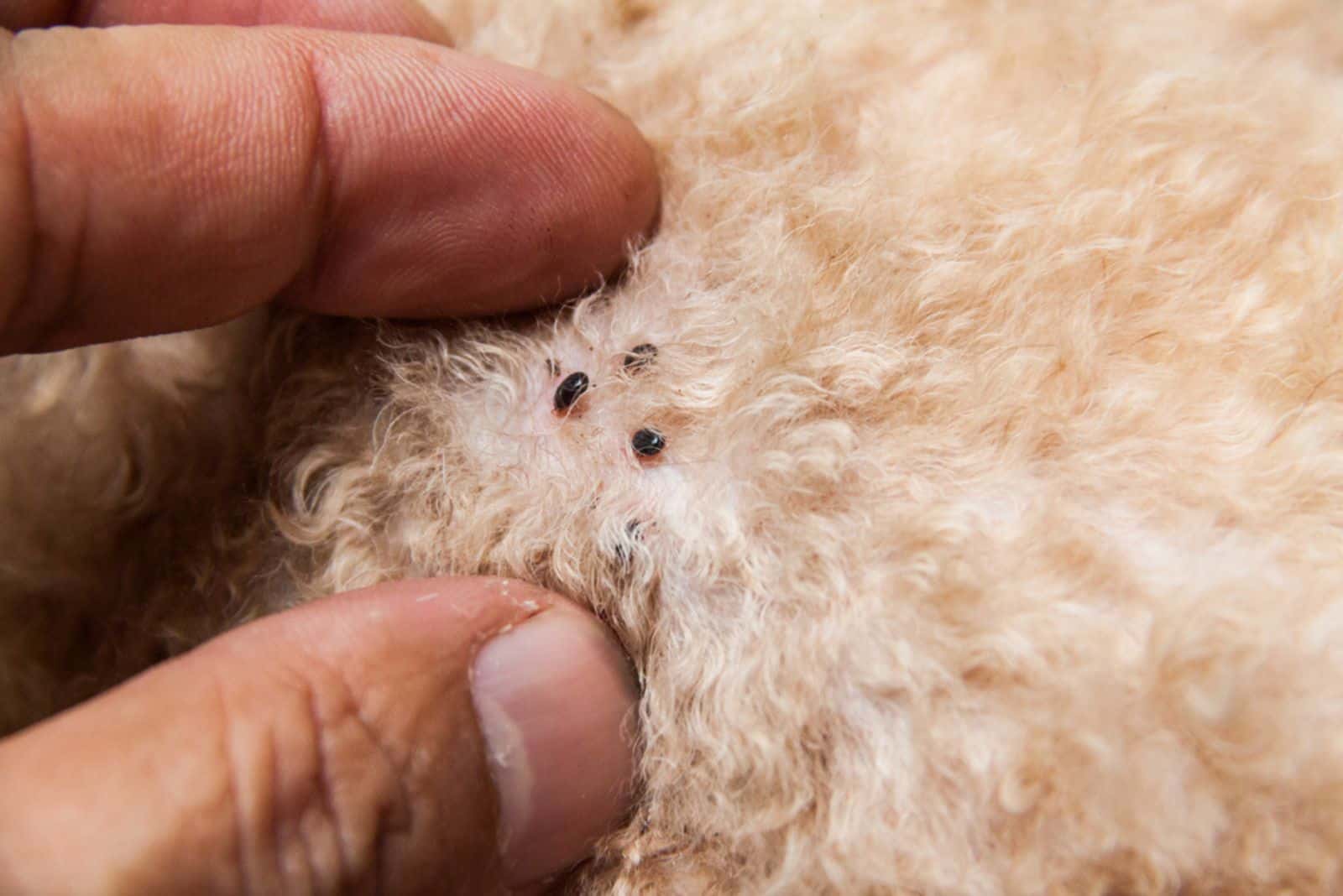
Sarcoptes scabiei var canis or sarcoptes mites are the name of the mite that causes Canine Scabies. The other name for this disease is Sarcoptic Mange.
This type of mite is very contagious and can be transferred to humans and other pets, too. The life cycle of the mite that causes Canine scabies is up to 21 days, and they go through their entire life cycle on a dog. That means we can find all four stages of this mite in a dog’s skin.
Why is that important? Because that means it is not enough to apply remedies a couple of times only. We need to do it for 4 to 6 weeks so that we can kill all mites, including the ones that are yet to become adult versions.
The incubation period — the period from the day of the infestation till the first symptoms occur, is from 7 to 10 days up to 8 weeks. The incubation period and the clinical picture will depend on the immune system of the dog, the number of mites transferred, and which part of the body is infected.
Symptoms include:
- First symptom — itching
- Small bumps on the skin
- Crusts
- Secondary infection (if the infestation is not treated)
The most common places for these scab-like lesions are:
- Chest
- Elbows
- Ears
- Legs
- Abdomen
If not treated, the scabs can appear all over the body. Eventually, the untreated Mange can lead to death.
2. Ear Mites
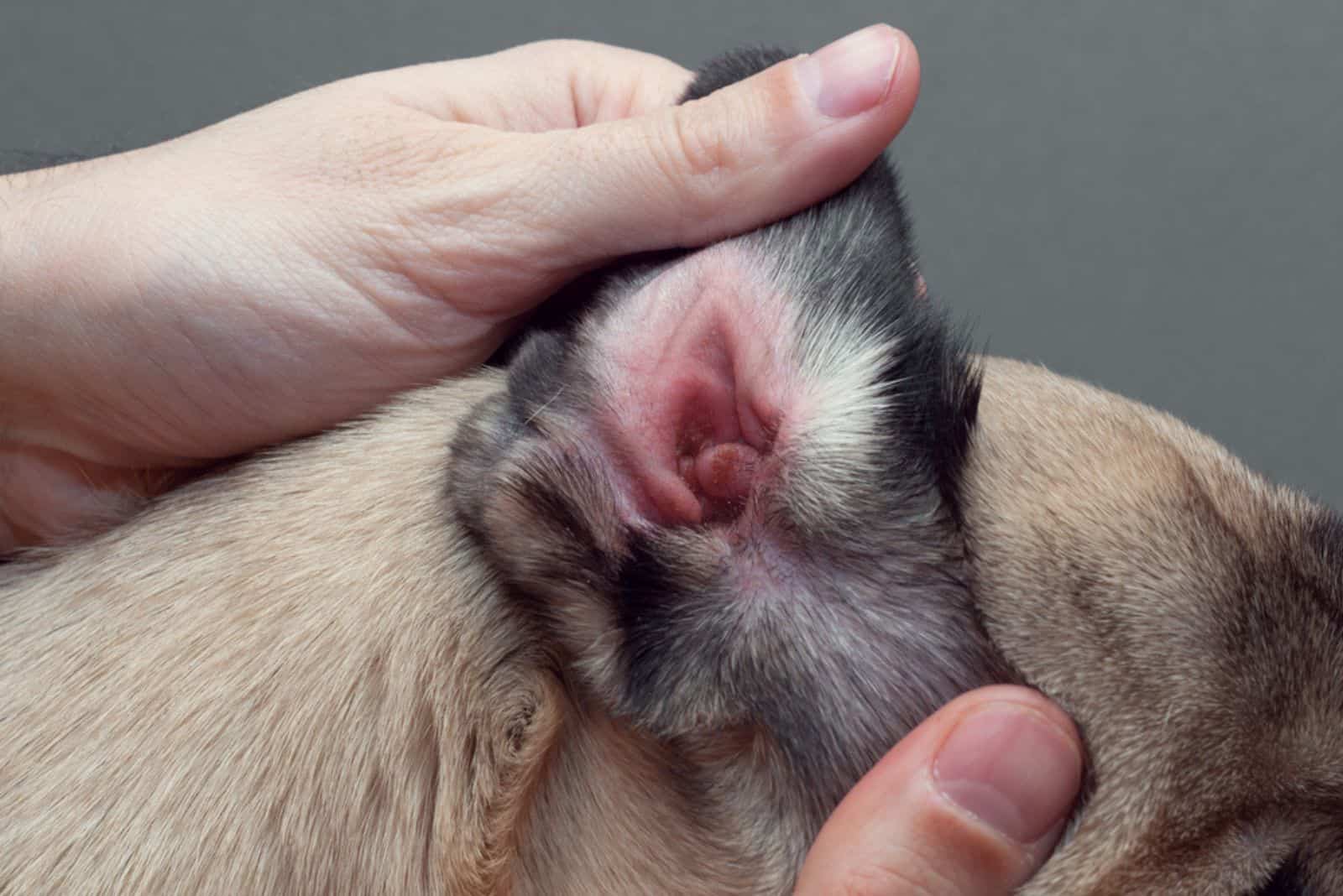
The other, scientific name, for ear mites, is Otodectic Mange. This type of skin disease is caused by the mite type called Otodectes cynotis.
This mite causes infection of the ear canal in dogs and cats. Infestation is more common in cats than in dogs, but it is still a dog problem that needs attention, as well.
As with other types of mites, a dog usually gets infected through contact with another dog. The infestation can happen to all dog breeds, no matter if the dog has long and droopy ears or erect ears.
Symptoms:
- Dog shakes head often
- Dog scratches ears and head often
- Dark ear discharge
- Black spots in the ear canal
- Secondary infection (if not treated)
If a dog has normally erect ears, the infected ear can get droopy. You should take your dog to the vet for a definite diagnosis. Your vet will also prescribe or recommend adequate medication or shampoos. And you can also try one of the 11 solutions for how to get rid of mites on dogs we talked about.
3. Canine Demodicosis
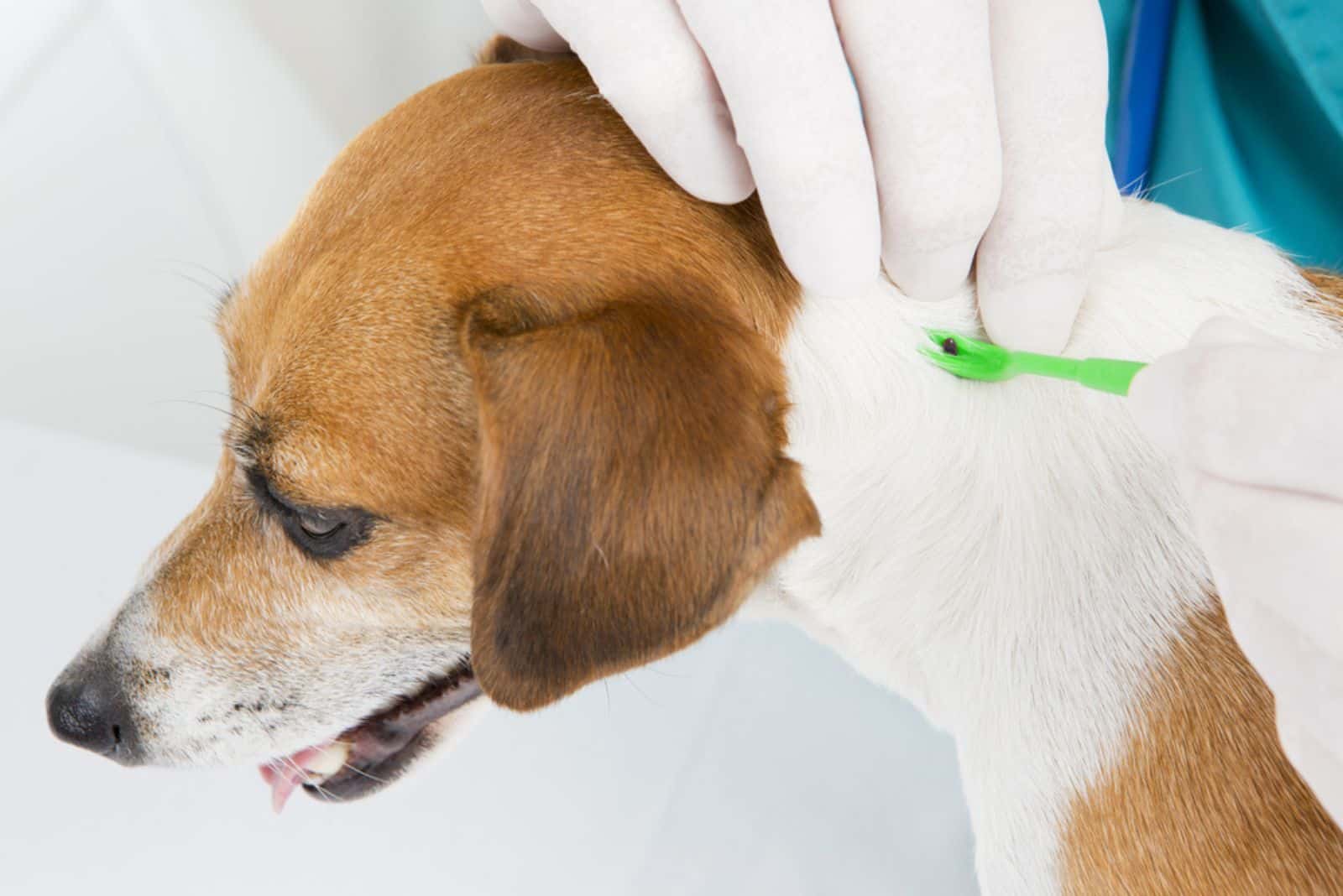
This type of mite is called the Demodex mite, and it normally lives in the hair follicles of all dogs. Demodectic mange (Demodex canis) is a disease that happens when the immune system of a dog is compromised. The conditions in the dog’s organism change and the Demodex mites take the opportunity to overpopulate, causing various symptoms.
There are two types of clinical pictures common to this skin disease:
- Generalized
- Localized
Both clinical pictures have the same symptoms:
- Itchiness
- Redness of the skin
- Loss of hair
- Scaly skin
The localized version is most commonly found in dogs up to 1 year of age. It is found on parts of the body, not the entire body of a dog. The most common localization of localized Demodectic mange:
- Abdomen
- Elbows
- Ears
- Chest
The generalized version affects the whole body. The lesions and hair loss can be found all over the body. This version is common in young dogs when it’s called the juvenile onset and in adult dogs — the adult onset.
4. Walking Dandruff
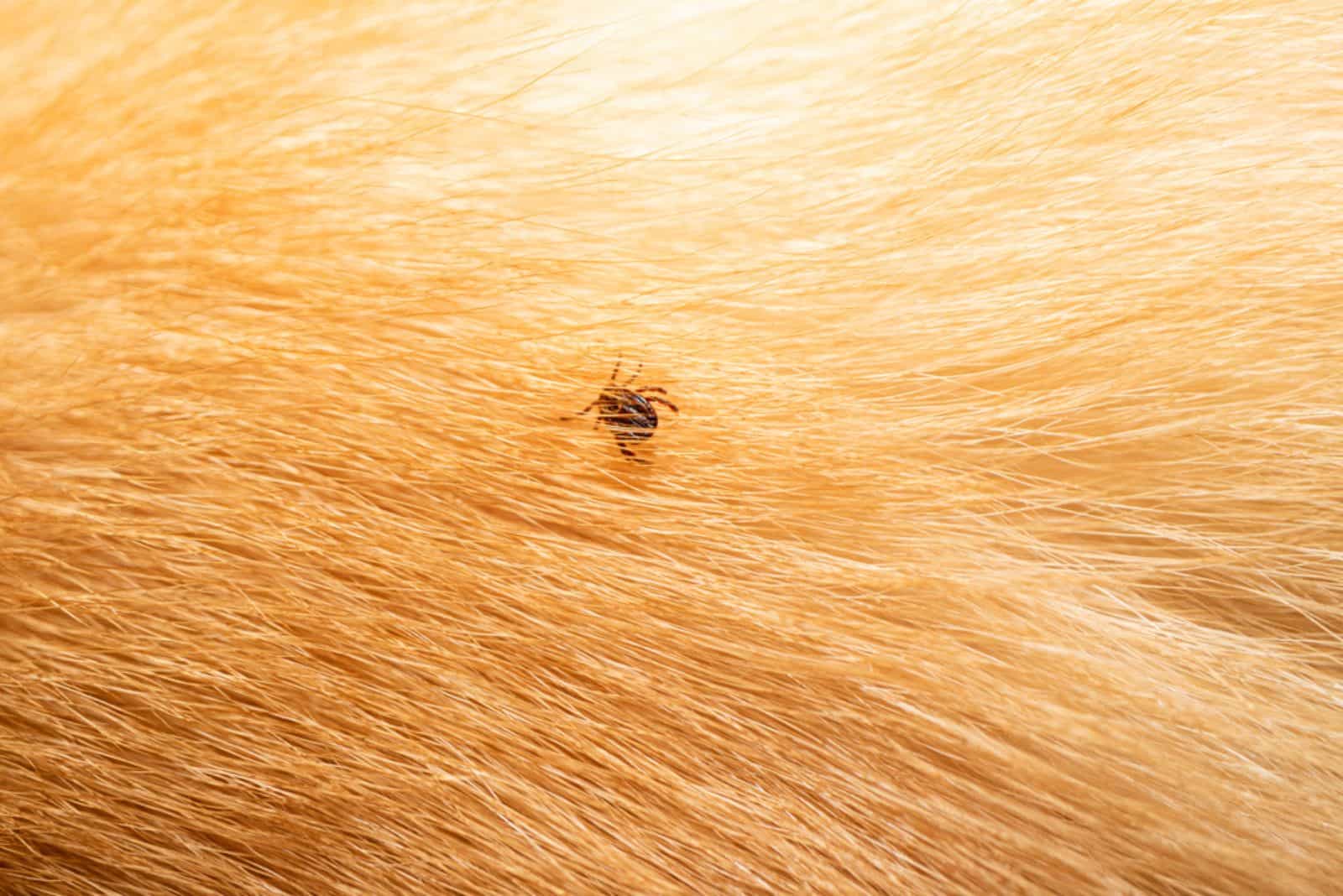
The scientific name for Walking dandruff is Cheyletiellosis and it is caused by a mite called Cheyletiella yasguri. It is called “walking” because of the dandruff-looking mites that move from place to place on a dog’s skin.
This type of mites disease is highly contagious. It is very common in kennels or households with multiple dogs or pets. The mites can also be transferred to people.
This type of mite also spends its entire life cycle on a dog, but it can also survive up to 10 days in the environment. The life cycle lasts around 3 weeks, so it is important to treat the dog against these mites for more than 4 weeks.
Symptoms will vary. Some dogs might feel itchy, while others don’t have to have an itchy feeling at all. The symptom that is most present is the scales on the infected parts of the skin.
Even if a dog does not show any signs of the disease, it can still transfer mites to other dogs, pets, and humans.
Symptoms:
- Scales on the skin
- Itchiness (doesn’t have to occur)
5. Trombiculosis
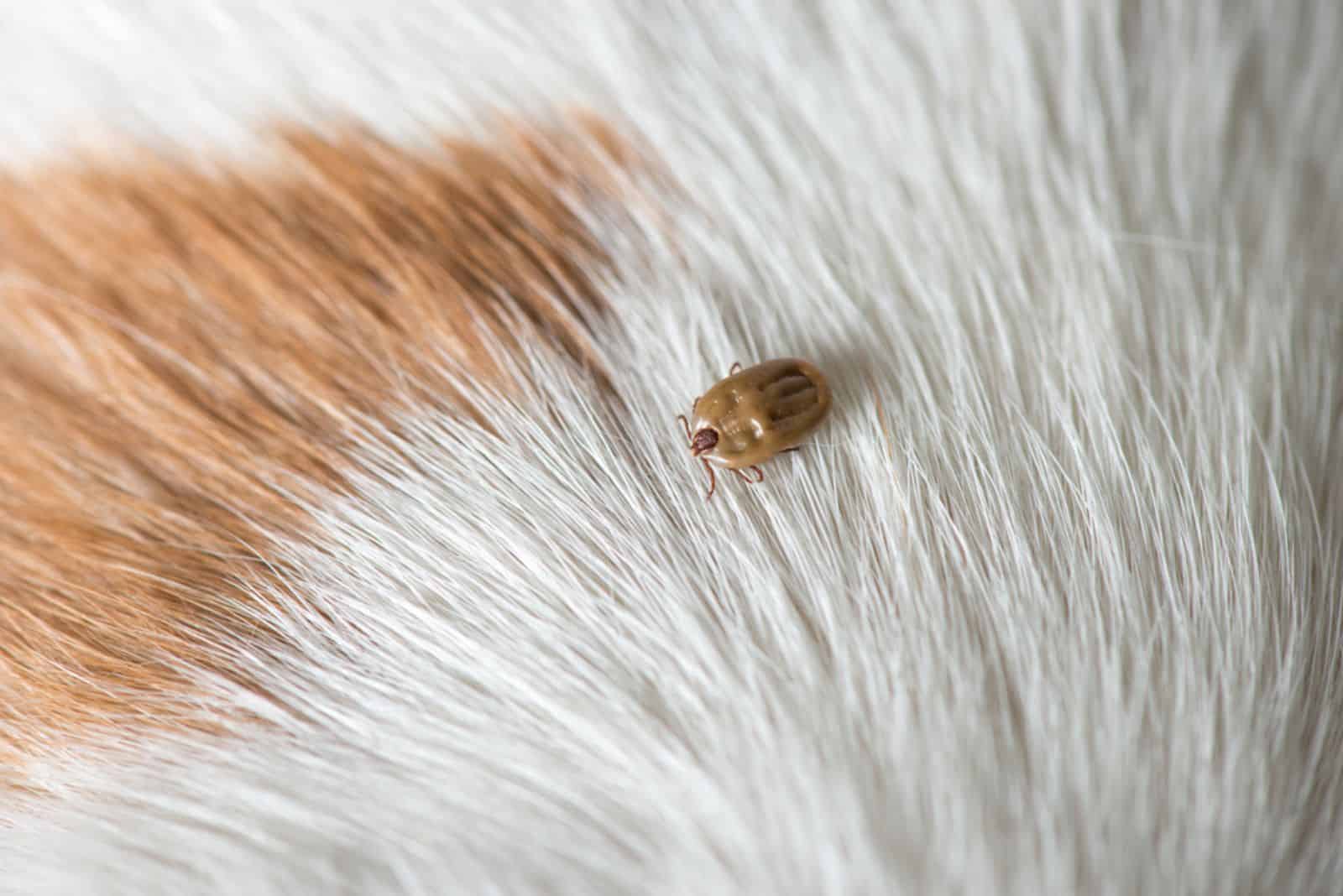
This is a type of mange caused by mites from the family of Trombiculidae (Chiggers). The larva of the mite causes the disease, not the adult form.
The larvae latch onto the dog (the host) and feed for a few days. When they are attached to a dog like this, they can be seen as little orange bumps or dots clustered together. They can usually be seen on the head, abdomen, ears, or feet.
After the larvae feed themselves, they leave. But that doesn’t mean the disease will cure itself. The adult mites might not cause discomfort and redness of the skin, but they are indirectly causing it by laying eggs on the dog’s skin.
The female mite burrows and lays eggs in tunnel-like formations in the skin. When the eggs turn into larvae, that’s when the feeding and the symptoms begin.
It can be very difficult to get rid of these mites.
Symptoms:
- Orange clusters on the skin
- Itchiness of the infected part of the skin
- Redness of the skin
- Lesions from scratching
How Do I Know If My Dog Has Mites?
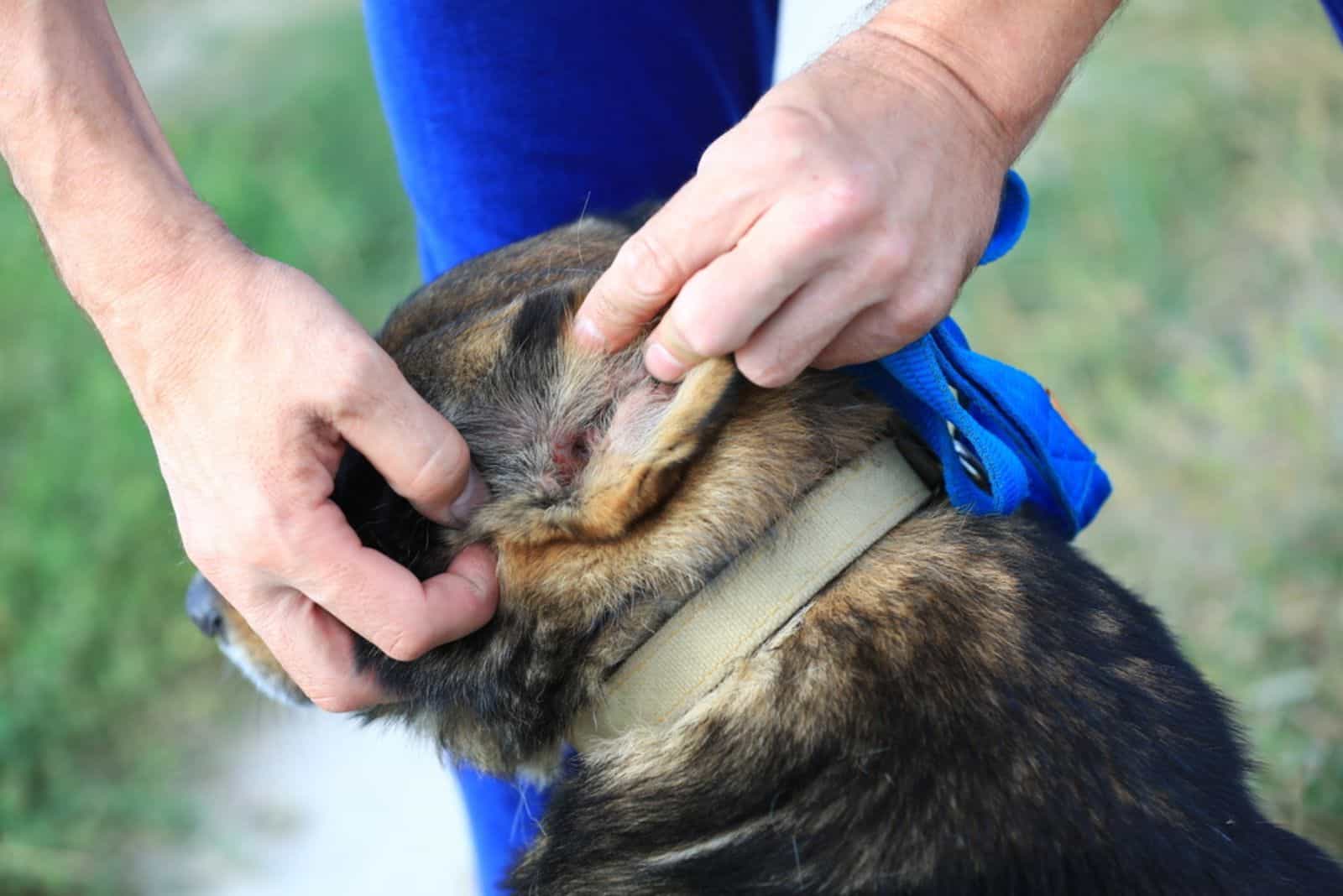
When we see a dog scratching or biting its fur, we all think of fleas first. But there are much smaller beings that can cause this type of behavior in dogs. They are all called mites and we’ve talked about the types common in dogs.
If you do notice your dog has been shaking its head more than usual, or it is in general acting weird all of a sudden and the behavior lasts — it is time to check the skin and fur.
Look at the part of the body your dog scratches, licks, or bites the most, and pay attention to the skin. You are looking for these symptoms:
- Redness of the skin
- Lesions on the skin
- Scabs
- Crusts
- Scales
- Orange clusters
- Dark, dirt-like spots
- Hair loss
- Itchiness
If you notice one of these symptoms or several of them, the first step is to take your dog to the vet. The veterinarian will do a proper examination of the dog’s skin and fur and can take skin scrapes to send for lab testing.
Lab testing will tell us what causes the symptoms or in other words — what type of mites we are dealing with.
After the correct diagnosis is established, we can move on with the treatment and with the answers to the question of how to get rid of mites on dogs. There are shampoos, spot-on, and home remedies, to treat the infestation.
Your vet will recommend the best option according to the clinical picture, age, and health status of your dog.
How To Prevent Dog Mites?
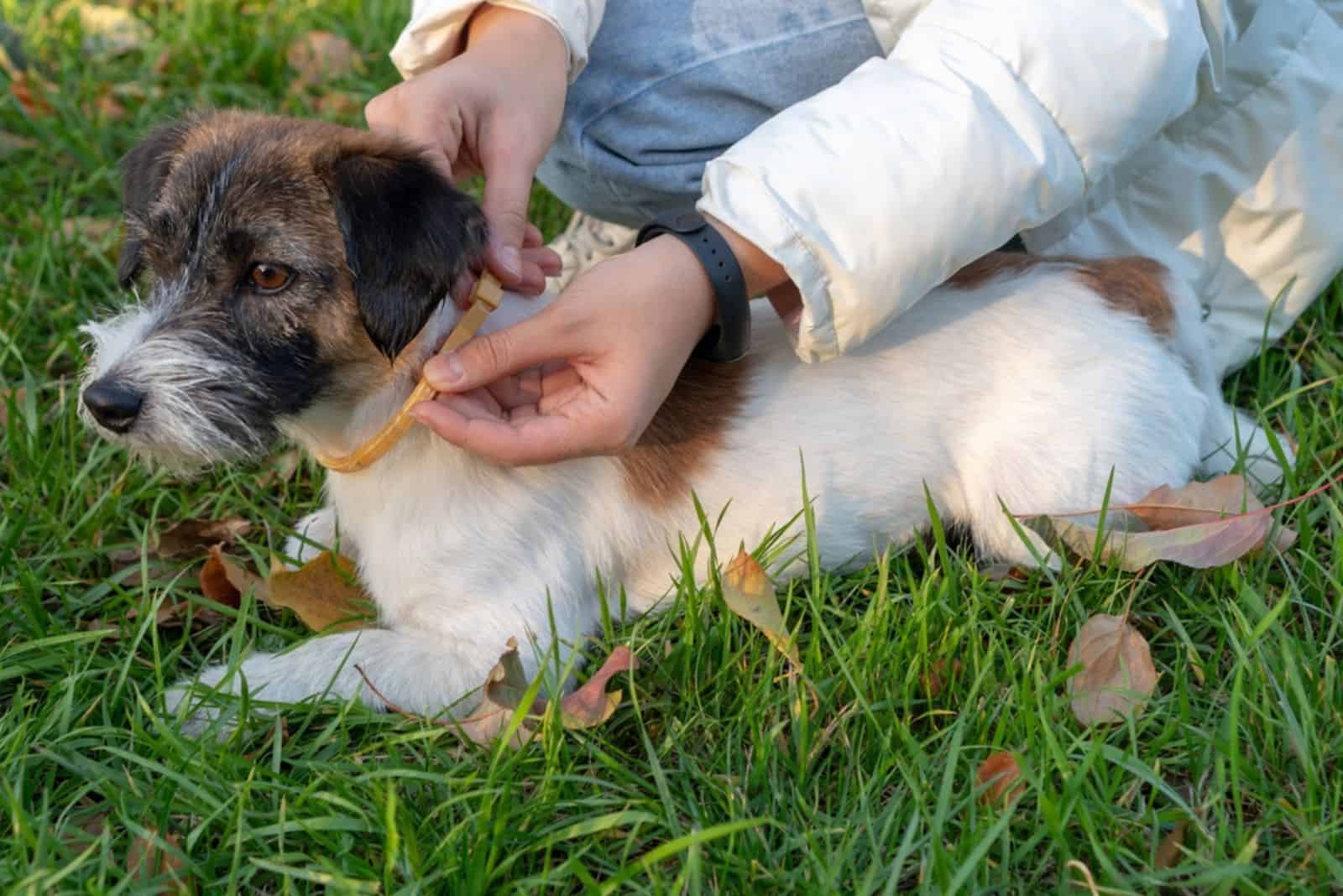
Preventing dog mites from reinfesting our dog can be very difficult. We need to know where the dog got the infestation in the first place and not let it go back there. That can be tricky or almost impossible.
We also have to thoroughly clean the entire house with anti-parasitic cleaning products. The most important part of the home is the part where your dog spends most of its time, especially the bed.
But the ideal option would be to turn the house upside down and clean everything with a pet-safe, anti-parasitic cleaning product. When choosing cleaning products for floors, keep in mind that there are some cleaning products that have very strong smells that dogs hate.
Also, make sure the dog won’t lick or ingest any type of cleaning product you use.
You can indirectly try to prevent dog mites by making your dog’s immune system stronger. You can do this by adding various supplements to your dog’s diet. Anything that is approved by your vet and acts as an immune system booster is a bonus.
The supplements don’t have to be something you buy at the pet store in the form of food drops — they could be veggies and fruits, like Brussels sprouts or apples! Just make sure you check with your vet what type of veggies and fruits are OK for a dog to eat.
The Conclusion
As you’ve probably noticed, mites are very hard to get rid of. So, if you were looking for answers on how to get rid of mites on dogs, the answers might not be as cut and dry as you thought so.
It will take time and a lot of patience from both you and your doggo to get rid of mites. Your dog will have to settle with the fact there will be a lot of baths with funny smells. Borax, special shampoos, apple cider vinegar, etc — all of these substances are not every dog’s dream smells.
But mites are treatable — that is the light at the end of the tunnel. And it’s not a mite train filled with tons of new mites ready to jump on your dog. It is a light of a new day where dogs don’t scratch and bite but are free of mites.
You can try an anti-parasitic shampoo, or a spot-on medicine recommended by your vet. Or you can roll up your sleeves and make a homemade remedy to get rid of mites. Whatever you choose, consult your veterinarian first, especially if you decide to make a remedy on your own.
Read Next:
• How To Treat Mange In Dogs At Home — 7 Best Home Remedies
